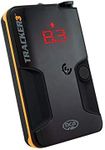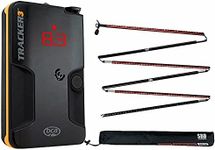Buying Guide for the Best Avalanche Beacon For Skiers
Choosing the right avalanche beacon is crucial for skiers who venture into backcountry areas. An avalanche beacon, also known as an avalanche transceiver, is a device that emits a signal to help rescuers locate you in the event of an avalanche. When selecting an avalanche beacon, it's important to consider several key specifications to ensure you have a reliable and effective device. Understanding these specifications will help you make an informed decision and choose the best beacon for your needs.FrequencyThe frequency of an avalanche beacon is the radio signal it emits. All modern avalanche beacons operate on the international standard frequency of 457 kHz. This standardization is crucial because it ensures compatibility between different brands and models, allowing any beacon to be detected by any other beacon. When choosing a beacon, make sure it operates on this frequency to ensure it can be used in conjunction with other devices during a rescue operation.
RangeThe range of an avalanche beacon refers to the maximum distance at which it can detect another beacon's signal. A longer range can significantly improve the chances of a successful rescue by allowing searchers to locate a buried person more quickly. Beacons typically have a range between 30 to 70 meters. For most skiers, a range of 40 to 50 meters is sufficient, but if you often ski in areas with deep snow or complex terrain, opting for a beacon with a longer range might be beneficial.
Search Strip WidthSearch strip width is the width of the area that a beacon can effectively search when in search mode. A wider search strip means fewer passes are needed to cover a given area, which can speed up the search process. Typical search strip widths range from 20 to 70 meters. For recreational skiers, a search strip width of around 40 meters is usually adequate. However, if you are a professional or frequently ski in high-risk areas, a wider search strip can be advantageous.
Number of AntennasAvalanche beacons can have two or three antennas. Three-antenna beacons provide more accurate and reliable search results, especially in complex burial situations. They can help pinpoint the exact location of a buried person more quickly and with greater precision. If you are new to using avalanche beacons or want the most reliable option, a three-antenna beacon is recommended. Two-antenna beacons are generally less expensive but may not offer the same level of accuracy.
Battery LifeBattery life is an important consideration because a beacon with a dead battery is useless in an emergency. Most beacons use standard alkaline batteries and have a battery life of around 200 hours in transmit mode. It's important to regularly check and replace the batteries to ensure your beacon is always ready for use. If you often go on extended trips, consider a beacon with a longer battery life or carry spare batteries with you.
User InterfaceThe user interface of an avalanche beacon includes the display, buttons, and overall ease of use. A clear, intuitive interface can make a significant difference in a high-stress situation. Look for beacons with easy-to-read displays, simple controls, and clear instructions. If you are new to using avalanche beacons, choose a model with a straightforward interface to ensure you can operate it effectively under pressure.
Additional FeaturesSome avalanche beacons come with additional features such as marking functions, multiple burial indicators, and Bluetooth connectivity. These features can enhance the functionality of the beacon and improve the efficiency of a search. For example, a marking function allows you to mark the location of a found victim and continue searching for others. Consider your specific needs and the conditions you typically ski in when deciding if these additional features are necessary for you.


















